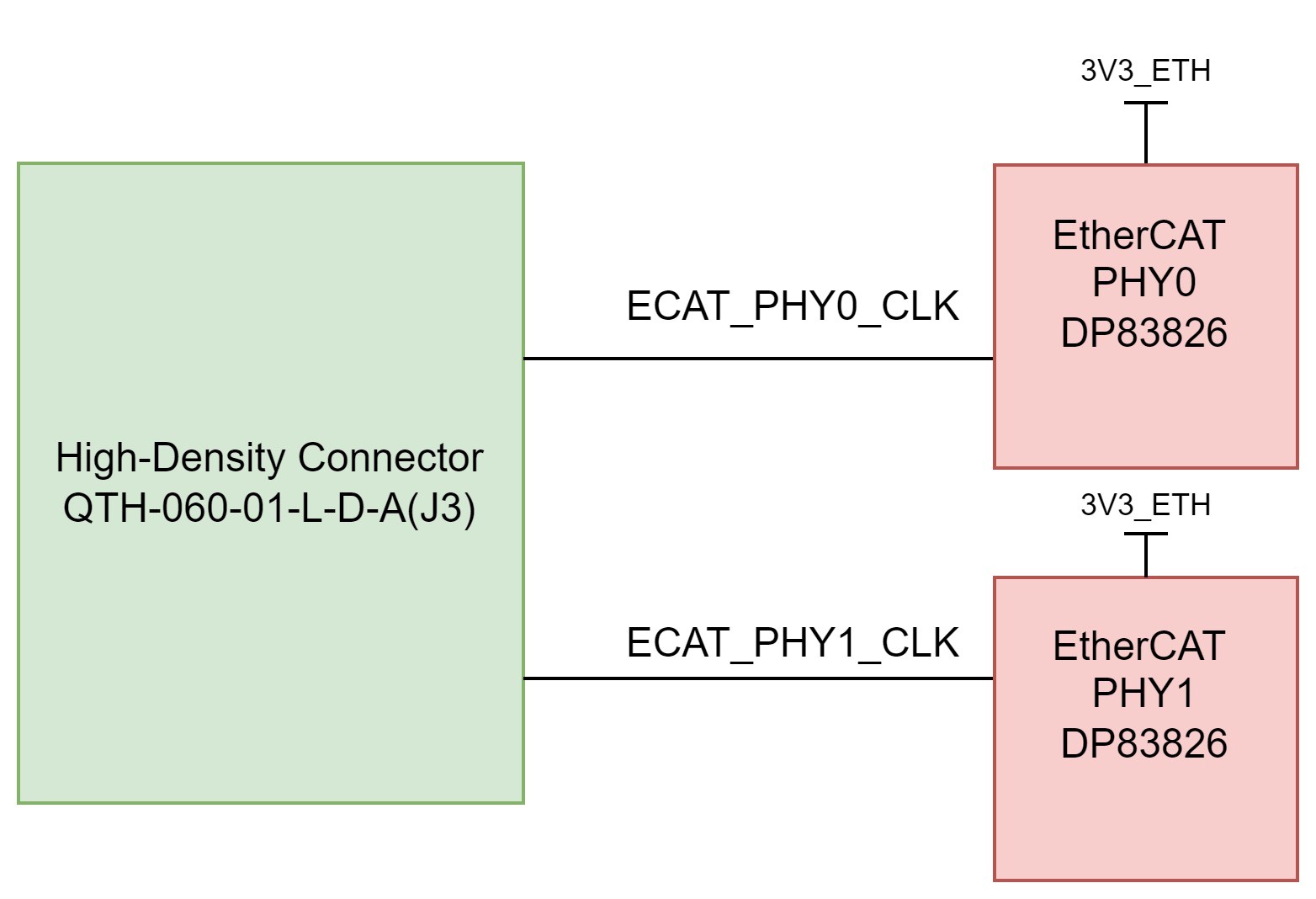SPAU023 June 2024
- 1
- Description
- Features
- 4
- 1Evaluation Module Overview
-
2Hardware
- 2.1
System Description
- 2.1.1 Key Features
- 2.1.2 Important Usage Notes:
- 2.1.3 Functional Block Diagram
- 2.1.4 Power ON/OFF Procedures
- 2.1.5 Peripheral and Major Component Description
- 2.1
System Description
- 3Hardware Design Files
- 4Additional Information
2.1.5.1 Clocking
The Clock architecture of the HSEC Adapter board is shown below.
 Figure 2-5 Clock Architecture
Figure 2-5 Clock ArchitectureA clock generator of part number LMK1C1103PWR is used in SOM to drive the 25MHz clock to two EtherCATPHYs, and F28P65x MCU Clock. LMK1C1103PWR is a 1:3 LVCMOS clock buffer, which takes the 25MHz crystal/LVCMOS reference input and provides four 25MHz LVCMOS clock outputs. The clock signal for EtherCAT PHYs is routed from SOM to High-density connector.